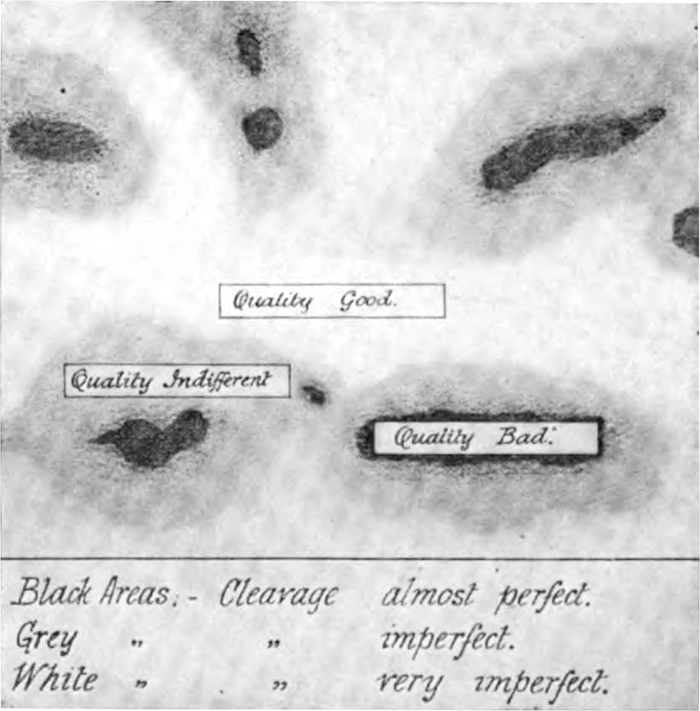there takes place from a series of centres

*
Plate 28, Fig. 14
(cropped from border and page)
illustrating John Oliver Arnold (1858-1930). “Factors of Safety in Marine Engineering.” Transactions of the Royal Institution of Naval Architects 1 (1908) : 260-282, discussion 283-289
University of Michigan copy, digitized July 17, 2007
“The facts enumerated bring metallurgists face to face with a hitherto unsuspected phase of the crystallization of iron; namely that in over-heated mild steels, which necessarily leave the rolls at a high temperature, cool relatively slowly, and hence, slowly and more or less perfectly crystallize, after the microscopically visible crystallisation is completed, there takes place from a series of centres a secondary and microscopically invisible phase of crystallisation, which may be best described as a sharp, molecular development of potential cleavage planes. Steel in the centres of such developments will be brittle. The steel near the circumferences in which the molecular re-arrangement is only partially developed will be indifferent in quality, whilst steel beyond the radius of these developments of molecular cleavage will be good. ¶ In Fig. 14 (Plate XXVIII.) the hypothesis above enunciated is shown in graphic form.”
pp 278-279
—
Oliver was Professor of Metallurgy, Sheffield University. Expert in high-speed steels; “discovered the influence of vanadium on steel,” later substituted molybdenum for tungsten (Montreal Gazette, March 29, 1930, here ).
Three portraits at NPG
tags:
cleavage plane theory; crystallization; islands; slowness; J. O. Arnold, “Factors of Safety in Marine Engineering” (1908)